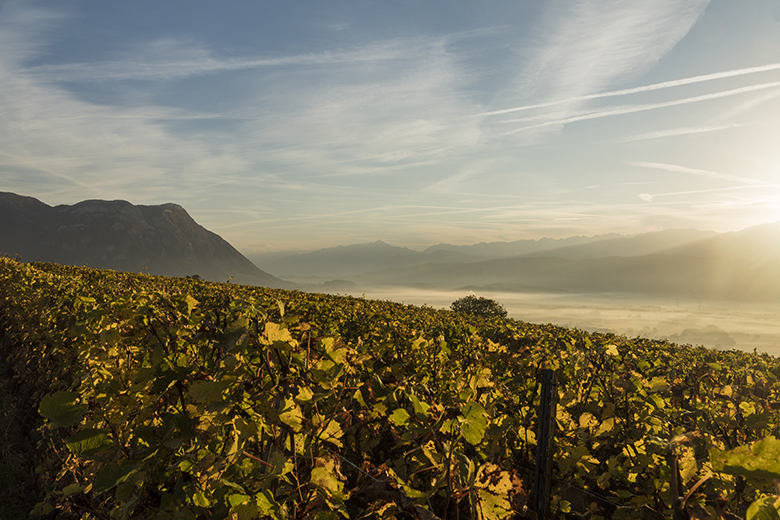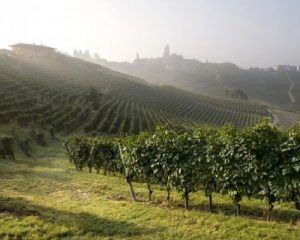
Every year, we write up our scores and detailed analysis for the most recent vintage release. Our verdict of the 2018 vintage begins with France’s north-eastern regions: Champagne, Alsace, Jura, and Savoie.
Alsace’s 2018 vintage
Dry whites: 17/20
Sweet whites: 16/20
Reds: 15/20
This was another premature vintage for Alsace, somewhat of a habit for the region as time goes on. Unlike in 2017, there was no damage caused by frost, and the harvest did well in terms of volume. In fact, the yields did so well that some got a little out of hand, with some producers risking dilution in their wine. With many of the higher-quality producers, particularly the organic and biodynamic domains, this has turned out to be a good vintage, especially for the Pinot gris. This is a bit less the case for the Pinot noir, even though these have come out superbly for the producers who show real care and attention by planting them in good terroir, for example. The dry whites are good on the whole, with Riesling coming out on top from the finest, grands crus terroirs. The only thing to look out for in these wines is the drought that disturbed the maturity of certain parcels due to water stress.
Champagne’s 2018 vintage
Blanc de noir: 17/20
Blanc de blancs: 15/20
We should remember a few particularities about Champagne before looking at the 2018 vintage. Firstly, the vast majority of champagne made and consumed doesn’t come from just one vintage year, but rather a blend of vintages, the combination of which is supposed to provide consistency. This means that the qualities and potential defaults of a single vintage do not determine the final result. Secondly, champagne is a “transformed” wine, so there are only two solutins when evaluating the true quality of a vintage: either tasting the year’s clear wine after a few months of vinification before it becomes champagne, or waiting until the production cycle for a single-vintage champagne finishes, meaning several years later.
After a 2017 that was complicated by an abundance of rain at the crucial harvesting time, the 2018 vintage was, by comparison, an oasis of calm for the producers. Harvesting took place in the sunshine with a generous and very healthy yield. 2018 might have been a really great vintage, though the density of most of the wines will be somewhat weakened by the high volumes harvested, particularly for the blanc de blancs. Champagnes made from Pinot noir will be better structured thanks to the qualities possessed by the varietal. We have also noted that this was seemingly a favourable year for Pinot meunier grapes, dominant in the Marne Valley where they will give nice, quite indulgent champagnes.
See our selection of Champagnes
Jura and Savoie’s 2018 vintage
Reds: 17/20
Whites: 16/20
As with many appellations that have a “fresher” climate, the Jura and Savoir regions produced some lovely wines in 2018, particularly when it comes to their reds.
Jura wine growers heaved a sigh of relief when all their grapes were successfully harvested and transported to the winery: after a series of vintages had been seriously curtailed by weather conditions (mainly frost and hail), 2018 finally brought a ‘normal’ year, aside from a few instances of mildew also seen in other French regions. The Trousseau varietal has made for some especially juicy and ripe wines, and the Poulsard cuvées carry a deeper colour than usual, though they are still flavourful and easy-drinking. The whites are a little more varied. Some have suffered from dilution what with the unhabitual abundance of yields and from a lack of acidity. This isn’t so much the case for the Savagnin ouillé (topped-up), which has a more marked natural acidity than Chardonnay.
Savoie’s 2018 wines follow a similar trend, with a generous production rich in potential. For now, global warming acts as a kind of advantage in this region, especially for its red wines. This vintage will see some lovely Mondeuses cuvées, undoubtedly less austere that usual, and these will age harmoniously. Some of the white wines are a bit heavy, lacking in acidity, particularly the Chignin-Bergeron which already has a tendency towards an opulent profile. Cuvées made from Jacquère, a naturally taut varietal, has come out particularly well in the hands of the best producers, as is the case for certain Roussette wines.



